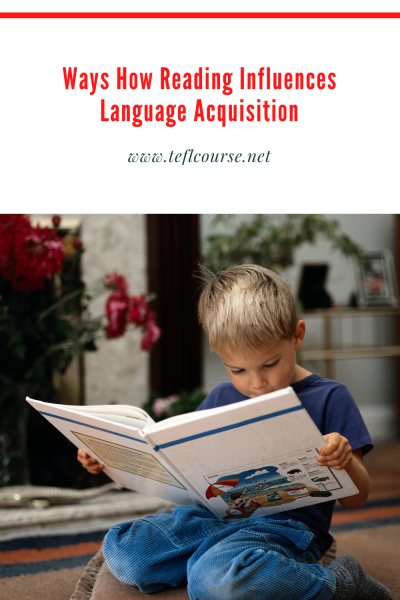Ways How Reading Influences Language Acquisition

In this paper, we will attempt to show how important reading is and how it can influence language acquisition and its development. We will mainly focus on primary school pupils as most children start to learn to read around six or seven years of age. With this aim in mind, we will first try to define what reading is and carry on by providing a description of the different types of readings. In a second phase, we will look at the reasons that encourage pupils to read and finally the type of reading material that can be presented to them
This post was written by our TEFL certification graduate Alexandre B. Please note that this blog post might not necessarily represent the beliefs or opinions of ITTT.
Definition
First and foremost and to have a better understanding of the topic of this essay, we will try to give a definition to the term “reading”. The Cambridge dictionary gives us several definitions of the verb, reading describes the action of “[…] look[ing] at words or symbols and understand what they mean” in the one hand but also “to say the words that are printed or written” as well as “to understand and give a particular meaning to written information, […] statement[s], [or] […] situation[s]”. Reading is also one of the two receptive skills along with listening.
Also Read: Top Online Lesson Plan Resources for New and Advanced Teachers
Type of readings
1. Phonics-based reading
Now that we have defined what the act of reading was, we will see what the different reading methods are. Fundamentally, there are 2 of them. The first one, called phonics, is as the name suggests, a reading technique based on phonemes, that is to say on the sound each letter produces when pronounced. This phonics-based reading enables the learner to identify the grapheme and associate it with a specific sound, combine the syllables, and eventually blend them into words.
2. Read-as-a-whole approach
Once the pupil is comfortable with this approach and masters it, it could be interesting to introduce another instructional methodology— the whole language reading that teachers tend to opt for as a first option. In my opinion, it could be beneficial for the student to combine both teachings. Reading as a whole, unlike the former technique, emphasizes on the word as a full block and no longer as separate phonemes. In this way, the child will recognize the words easier and understand their meaning, especially if the words are associated with images. It can also give room to the child’s own imagination and interpretation of the story he/she is reading. Furthermore, the learner does not have to understand all the words as he/she will interpret the overall context thanks to the vocabulary he/she will have already assimilated. Hence the importance of staying in the same lexical field so that they can memorize the words more easily, which will, ultimately, help them develop not only their reading and listening skills, but also their ability to spell and therefore to write. In other words, their language competences as a whole.
Also Read: Getting Student Placement Right - The Best Desk Arrangements for EFL Students
Reasons and benefits of reading
1. Reading for entertainment vs for a purpose
We have tried to demonstrate how essential reading was for the development of the child, and how it could influence his language acquisition. In this second part, we will look at the reasons for reading. At that age, children usually see learning as a form of entertainment provided that the teacher is enthusiastic enough for them to enjoy the lesson and keep their interests high. Teachers, on the other hand, are teaching reading for a clear purpose, that of helping their pupils improve their overall language skills as we have seen earlier on. At a later stage in their life, these same children, who will have become adults, will most certainly read not only for their own entertainment but to achieve a specific goal; such as improving their language skills in a foreign language to obtain a language certification and get promoted for instance. Children do not have these needs yet.
Also Read: Top Online Lesson Plan Resources for New and Advanced Teachers
2. Type of material
So, to hold his/her pupils’ attention, the teacher will have to adapt his material accordingly. He or she will have to choose non-authentic material (and liven it up with colorful images) rather than authentic ones for primary school learners. He or she will have to make sure to select topics that are of interest to the children as well to keep them motivated.
Do you want to teach English abroad? Take a TEFL course!
Apply now & get certified to teach english abroad!
Speak with an ITTT advisor today to put together your personal plan for teaching English abroad.
Send us an email or call us toll-free at 1-800-490-0531 to speak with an ITTT advisor today.
Related Articles:
- Top 10 Mistakes to Avoid in the Classroom While Teaching English Abroad
- The 5 Most Common Types of EFL Students and How to Deal with Them
- 5 Reasons to Take a TEFL Course Right Now - Even If You Are Not Leaving Yet
- 3 Steps for Dealing with a Student with Challenging Behavior
- The 10 Most Common Types of EFL Teaching Jobs
- 5 Simple Tips to Improve Your Classroom Management Skills




